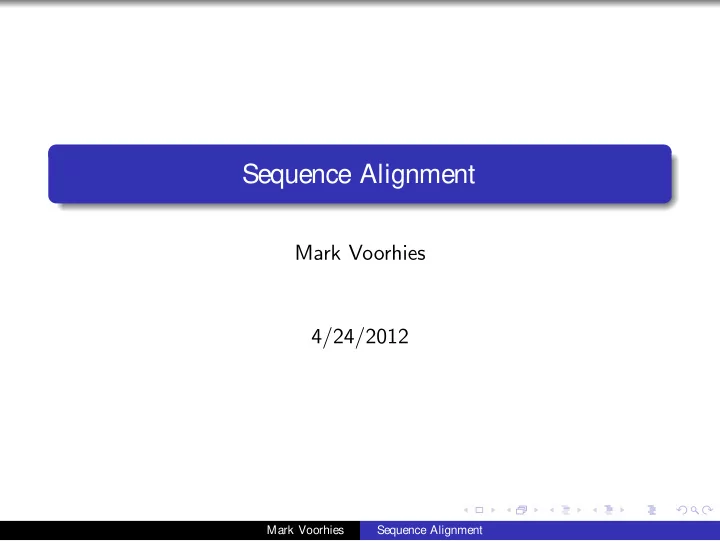

Sequence Alignment Mark Voorhies 4/24/2012 Mark Voorhies Sequence Alignment
Exercise: Transforming sequences 1 Write a function to return the antisense strand of a DNA
Why compare sequences? Mark Voorhies Sequence Alignment
Why compare sequences? To find genes with a common ancestor To infer conserved molecular mechanism and biological function To find short functional motifs To find repetitive elements within a sequence To predict cross-hybridizing sequences (e.g. in microarray design) To predict nucleotide secondary structure Mark Voorhies Sequence Alignment
Whiteboard Image Mark Voorhies Sequence Alignment
Nomenclature Homologs heritable elements with a common evolutionary origin. Mark Voorhies Sequence Alignment
Nomenclature Homologs heritable elements with a common evolutionary origin. Orthologs homologs arising from speciation. Paralogs homologs arising from duplication and divergence within a single genome. Mark Voorhies Sequence Alignment
Nomenclature Homologs heritable elements with a common evolutionary origin. Orthologs homologs arising from speciation. Paralogs homologs arising from duplication and divergence within a single genome. Xenologs homologs arising from horizontal transfer. Onologs homologs arising from whole genome duplication. Mark Voorhies Sequence Alignment
Dotplots 1 Unbiased view of all ungapped
Dotplots 1 Unbiased view of all ungapped
Types of alignments Global Alignment Each letter of each sequence is aligned to a letter or a gap ( e.g. , Needleman-Wunsch) Local Alignment An optimal pair of subsequences is taken from the two sequences and globally aligned ( e.g. , Smith-Waterman) Mark Voorhies Sequence Alignment
Exercise: Scoring an ungapped alignment s =
Exercise: Scoring an ungapped alignment s =
Exercise: Scoring an ungapped alignment s =
Exercise: Scoring an ungapped alignment s =
Exercise: Scoring a gapped alignment 1 Given two equal length gapped sequences (where “-”
Exercise: Scoring a gapped alignment 1 Given two equal length gapped sequences (where “-”
Homework 1 Read chapter 3 of the BLAST book (Sequence Alignment).
Recommend
More recommend